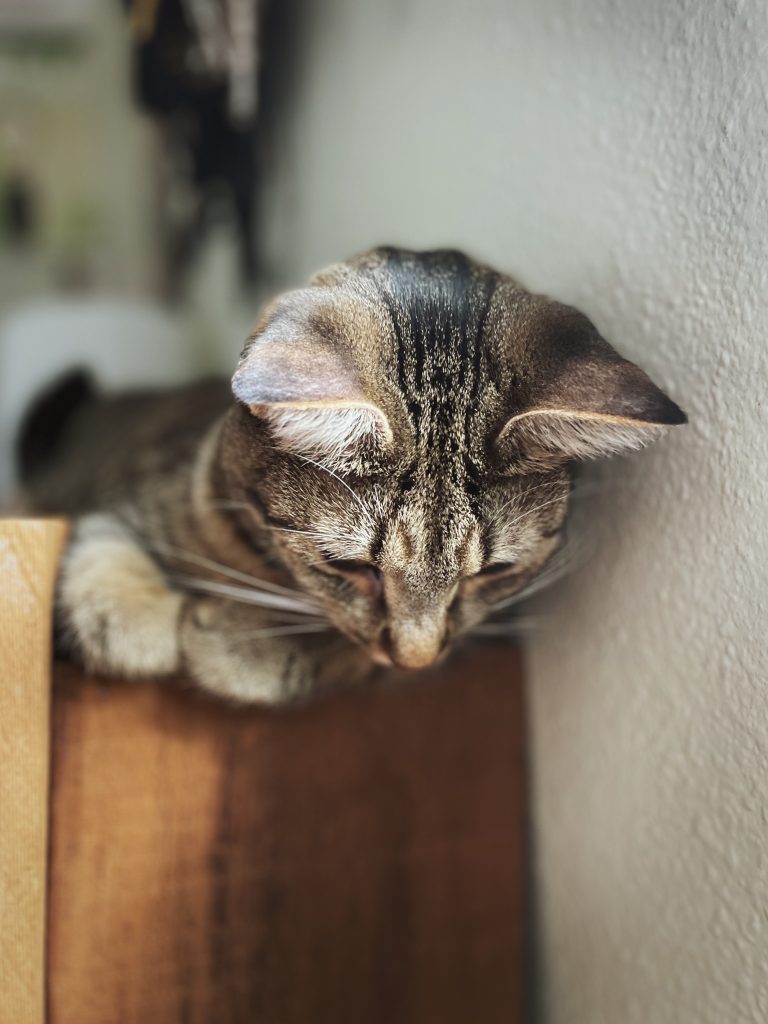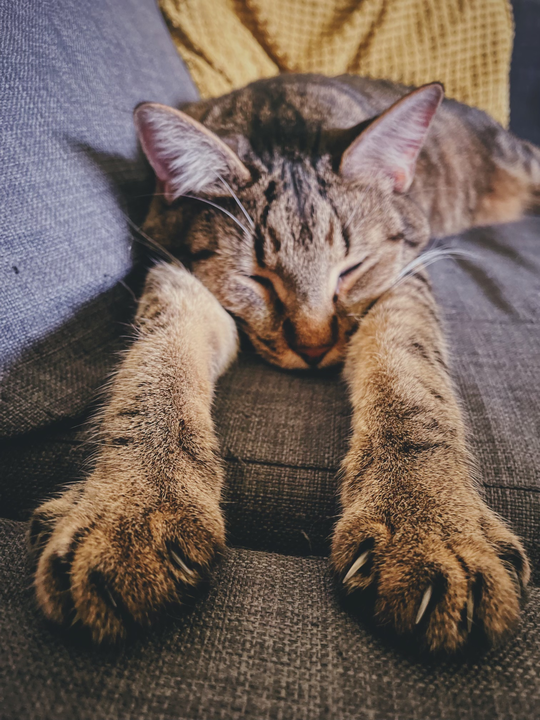It was a Wednesday afternoon and I was lying on the couch, watching mindless TV. All of the sudden, the ear-piercing fire alarm went off. My partner and I instinctively grabbed the pet carrier and shoved our little kitty into the fur-lined encasing, luring her with fishy smelling treats. Not even changing my pajama shorts or pulling on a coat, we rushed into the thirty-degree weather to escape the looming building fire. Now standing in the courtyard of the apartment complex, my eyes scanned the perimeter for answers and to see if anyone else was as dumb as me to walk out of the building in shorts. To my surprise, I counted more pet carriers than people and heard more meows than whispers. Like a grandma on a roadtrip pointing out every cow, I pointed out every cat to my partner. “Look! Another one!” I would exclaim. And a distressed meow would follow.
After this encounter, it dawned on me that a lot of people own cats. Was this just a PNW fixation on the feline? Is this from the isolation of the pandemic? What about the rest of the world that ends fire drills with pet carriers surfacing the courtyard? I began to regard it as my mission to solve the mystery of the abundance of cats.
Cats and dogs are already regarded as the most popular categories of pets, with dogs reigning as number one. According to the American Veterinary Medical Association, after the pandemic, dogs still maintained their number-one status as the most common pet. Dog owners increased from 38% to 45% from 2016–2020. However, cats had a spike in popularity from 2020–2022 from 26% to 29%.
Since I recently adopted a cat, I thought I should account for the accumulation of fur littering apartment buildings. What was it about my demographic that felt the urge to adopt a cat? Since I was a freshman in college, I would linger around the cat section of Petsmart and fantasize myself walking out with a meowing fur baby. The majority of my friends and the people around me range from 20 to 26 years old. Most are in university, childless, work a part-time job, and obviously, own a cat. Which led me to question, do academic settings breed an environment for cat lovers.

Millennials are currently the most educated generation, with Gen Z projected to surpass Millennials. Millennials and Gen Z are also the top contenders to choose fur babies over human babies. I found these facts to be interesting correlations considering the fact that Gen Z and Millennials are the top two generations said to be diagnosed with anxiety or depression according to the American Psychological Association (APA). There could be many reasons as to why younger generations are anxious, but one thing we know is that school is stressful. Deadlines, living on your own, student loans, student debt, and the impending doom of one’s future can all factor into a student’s mental health.
As I went further into the rabbit hole of generational history and facts, I asked myself what was the number one reason I wanted a cat? The answer was quite simple, I wanted a pet to help with my anxiety. And I realized I was not the minority of my generation. According to a 2019–2020 study, more than any other generation, Gen Z identifies stress relief with pets and animals.
Now the question still remains, why cats? Why subject ourselves to stinky litter boxes and an animal that has been deemed less affectionate than dogs? All facts about cats point to financial and time managing benefits. Unlike dogs, cats are very independent and less time-consuming. For instance, dogs need to be walked and need extensive stimulation from their owners. Cats are also more affordable in almost all aspects such as, adoption fees and prices, vet bills, food and toys. Now that we know Gen Z is a large slice of the pie in cat adoptions, we can see how more affordable and less time-consuming animals would benefit them while also giving them the serotonin benefits that animals serve.
Perhaps the rise in education and mental health awareness all points to more cats in our future. Perhaps the world will start to rid itself of allergies to dander. Maybe the next generation will switch to an affiliation with bunnies. One thing for certain is if there is a fire in your building, expect a lot of meows to compete with the fire alarm.





